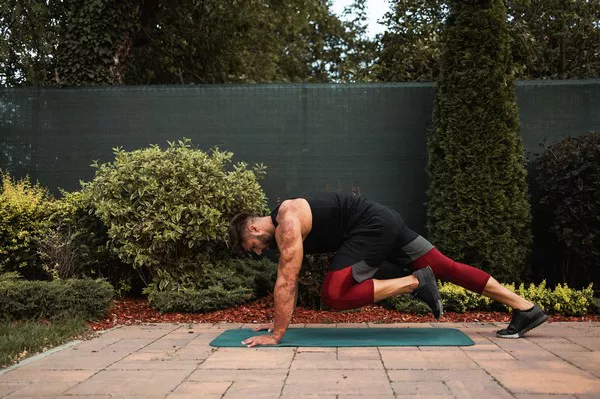Cardiovascular disease (CVD) is a leading cause of death worldwide, with risk factors including high blood pressure, high cholesterol, and obesity. While medication and lifestyle changes can help manage these risk factors, physical activity is one of the most effective ways to reduce the risk of CVD. In this article, we will explore how physical activity can reduce the risk of CVD and improve overall cardiovascular health.
What is Cardiovascular Disease?
Cardiovascular disease (CVD) is a term used to describe a range of conditions that affect the heart and blood vessels. These conditions can include coronary artery disease, heart failure, and stroke. CVD is a leading cause of death worldwide, with risk factors including high blood pressure, high cholesterol, smoking, and obesity.
How Does Physical Activity Reduce the Risk of Cardiovascular Disease?
Physical activity is one of the most effective ways to reduce the risk of CVD. Regular physical activity can help to:
Lower blood pressure: Physical activity can help to reduce blood pressure, which is a major risk factor for CVD.
Lower cholesterol: Physical activity can help to lower LDL (bad) cholesterol and increase HDL (good) cholesterol, which can help to reduce the risk of CVD.
Reduce inflammation: Physical activity can help to reduce inflammation in the body, which is a risk factor for CVD.
Improve insulin sensitivity: Physical activity can help to improve insulin sensitivity, which can help to reduce the risk of diabetes and CVD.
Promote weight loss: Physical activity can help to promote weight loss, which can help to reduce the risk of CVD.
What Types of Physical Activity are Best for Reducing the Risk of Cardiovascular Disease?
Both aerobic and resistance exercise can be effective for reducing the risk of CVD. Aerobic exercise, such as walking, running, and cycling, can help to improve cardiovascular health by increasing heart rate and breathing rate. Resistance exercise, such as weight lifting, can help to improve cardiovascular health by increasing muscle strength and endurance.
The American Heart Association recommends that adults engage in at least 150 minutes of moderate-intensity aerobic exercise or 75 minutes of vigorous-intensity aerobic exercise per week, along with muscle-strengthening activities at least two days per week.
How Much Physical Activity is Needed to Reduce the Risk of Cardiovascular Disease?
The amount of physical activity needed to reduce the risk of CVD can vary depending on individual factors such as age, health status, and fitness level. However, the American Heart Association recommends that adults engage in at least 150 minutes of moderate-intensity aerobic exercise or 75 minutes of vigorous-intensity aerobic exercise per week, along with muscle-strengthening activities at least two days per week.
It is important to consult with a healthcare provider before starting a new exercise program, especially if you have any underlying health conditions.
What are the Benefits of Regular Physical Activity for Cardiovascular Health?
Regular physical activity can provide a range of benefits for cardiovascular health, including:
Lowering blood pressure: Physical activity can help to reduce blood pressure, which is a major risk factor for CVD.
Reducing cholesterol: Physical activity can help to lower LDL (bad) cholesterol and increase HDL (good) cholesterol, which can help to reduce the risk of CVD.
Reducing inflammation: Physical activity can help to reduce inflammation in the body, which is a risk factor for CVD.
Improving insulin sensitivity: Physical activity can help to improve insulin sensitivity, which can help to reduce the risk of diabetes and CVD.
Promoting weight loss: Physical activity can help to promote weight loss, which can help to reduce the risk of CVD.
Improving cardiovascular function: Physical activity can help to improve cardiovascular function by increasing heart rate, improving blood flow, and strengthening the heart muscle.
How Can You Incorporate Physical Activity into Your Daily Routine?
Incorporating physical activity into your daily routine can be easy and enjoyable. Here are some tips for getting started:
Start slowly: If you are new to exercise, start with low-intensity activities such as walking or swimming and gradually increase the intensity and duration over time.
Find activities you enjoy: Choose activities that you enjoy, such as dancing, hiking, or playing sports, to make exercise more enjoyable and sustainable.
Make it a habit: Schedule physical activity into your daily routine, such as going for a walk after dinner or taking the stairs instead of the elevator.
Mix it up: Try different types of activities to keep things interesting and prevent boredom.
Get support: Join a fitness class or exercise group to stay motivated and get support from others.
Conclusion
Cardiovascular disease is a leading cause of death worldwide, with risk factors including high blood pressure, high cholesterol, and obesity. Physical activity is one of the most effective ways to reduce the risk of CVD by lowering blood pressure, reducing cholesterol, reducing inflammation, improving insulin sensitivity, promoting weight loss, and improving cardiovascular function. Incorporating physical activity into your daily routine can be easy and enjoyable, and can provide a range of benefits for overall cardiovascular health. If you are new to exercise or have any underlying health conditions, it is important to consult with a healthcare provider before starting a new exercise program.
[inline_related_posts title=”You Might Be Interested In” title_align=”left” style=”list” number=”6″ align=”none” ids=”5496,5474,5442″ by=”categories” orderby=”rand” order=”DESC” hide_thumb=”no” thumb_right=”no” views=”no” date=”yes” grid_columns=”2″ post_type=”” tax=””]
































